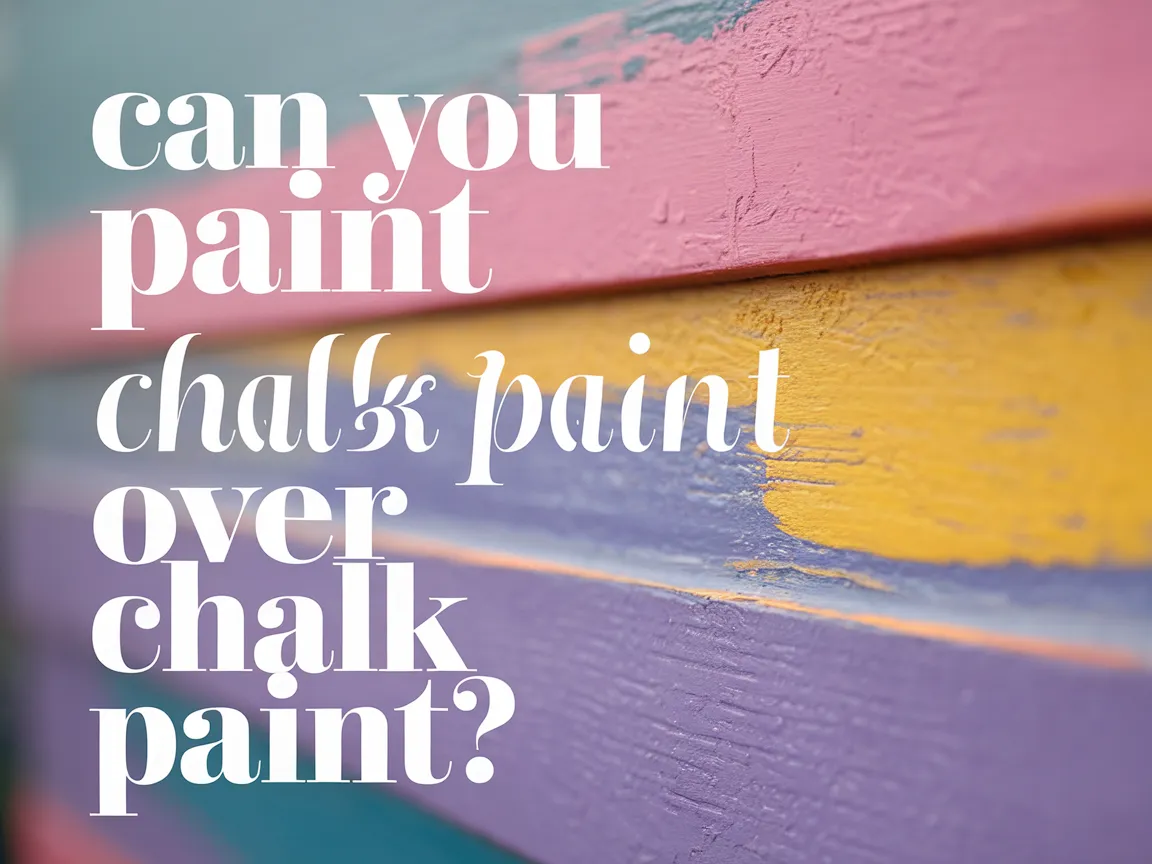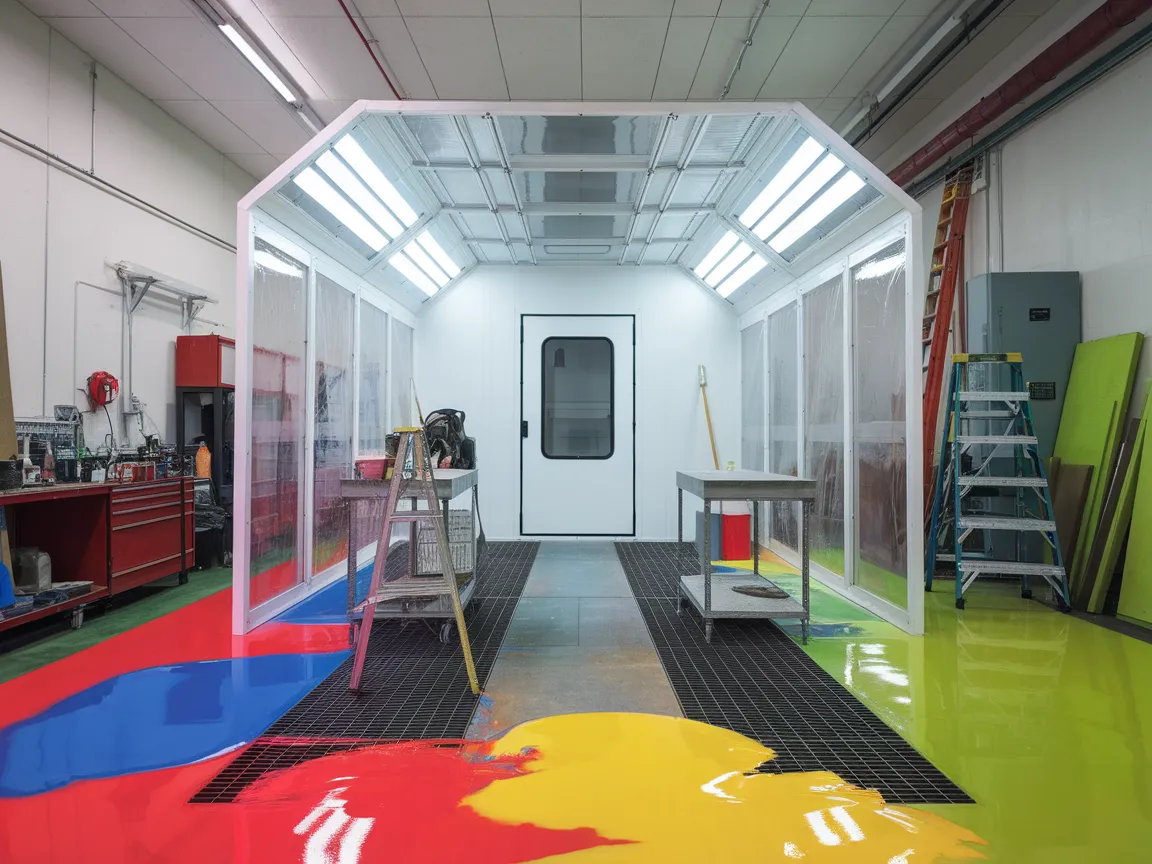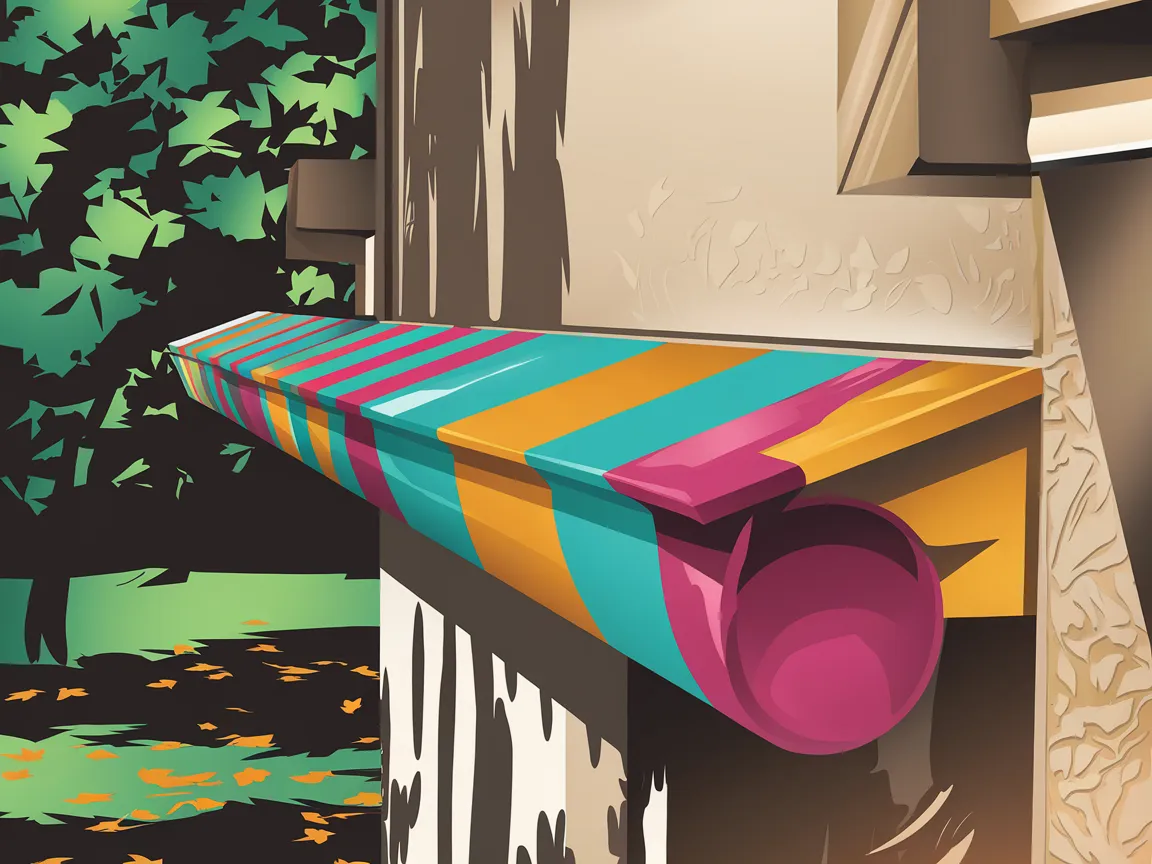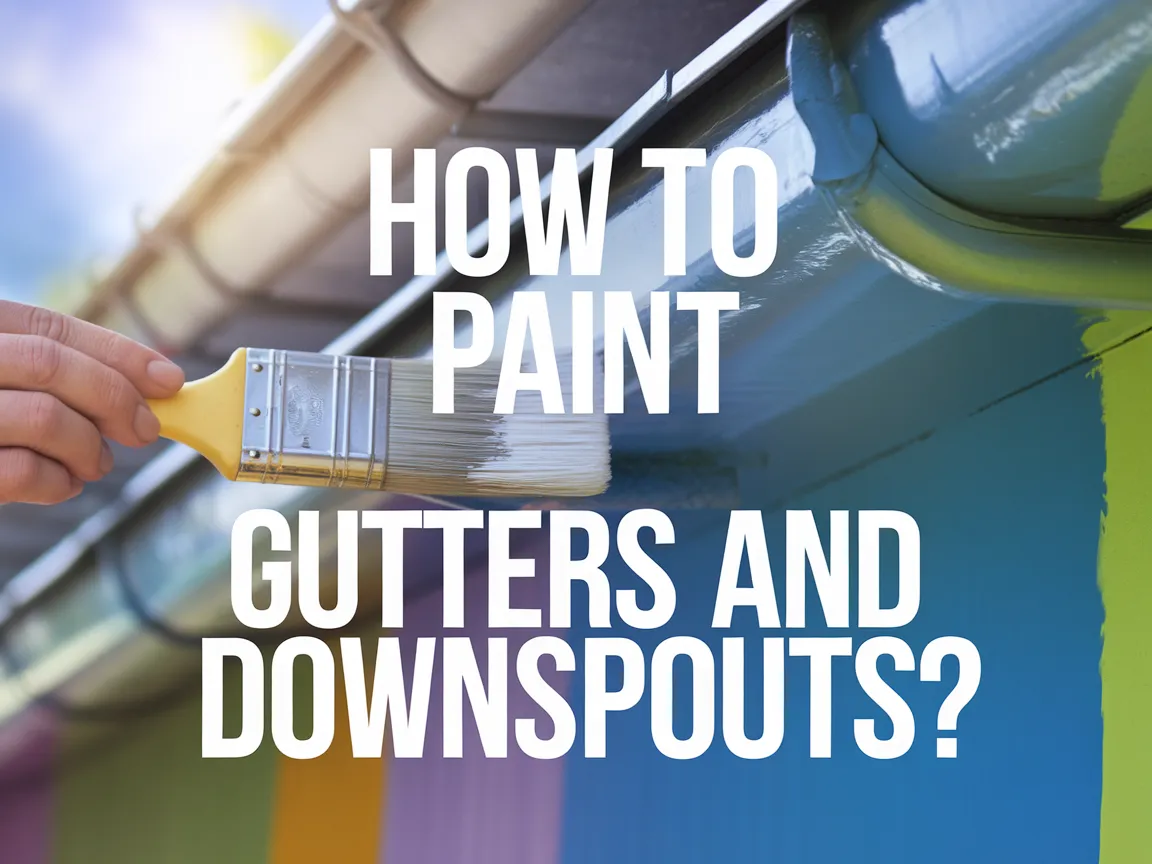Can Laminate Be Painted?
Published on: October 12, 2025 | Last Updated: October 19, 2025
Written By: Alisha Winters
Laminate is a shiny sheet that covers furniture or floors. It makes things look pretty and protects them, like a superhero cape!
So, can laminate be painted? It matters because transforming laminate can refresh your space with color and creativity. I once painted a laminate dresser and it totally brightened my room.
In this guide, we’ll explore what laminate is, what to consider before painting, a step-by-step painting process, color palette suggestions, types of laminate surfaces, factors influencing paint success, common issues, finishing touches, and fun DIY project ideas. Plus, I’ll dive into related topics, like how do you paint laminate kitchen cabinets and how to paint a laminate floor.
Contents
- 1 Can Laminate Be Painted?
- 2 What is Laminate?
- 3 What to Consider Before You Start Painting Laminate
- 4 Step-by-step Guide to Painting Laminate
- 5 Types Of Laminate Surfaces and Their Paintability
- 6 Factors Affecting the Success Of Painting Laminate
- 7 Common Issues Encountered When Painting Laminate
- 8 Finishing Touches to Enhance Your Painted Laminate
- 9 Tips for Achieving a Smooth Finish on Painted Laminate
- 10 Understanding the Different Finishes for Painted Laminate
- 11 Common Mistakes When Painting Laminate
- 12 Alternative Methods for Transforming Laminate
- 13 Frequently Asked Questions About Painting Laminate
- 14 Conclusion
- 15 Additional Resources
Can Laminate Be Painted?
Yes, you can paint laminate surfaces. First, clean them well. Then, use a primer designed for laminate. Finally, apply a quality paint for best results. When selecting the right paint, you might want to explore touch-up paint options that match your specific surface. This way, your laminate can look fresh and stylish!
The Finishing Touch
A freshly painted wall is a blank canvas. The best way to bring your room to life is with a single piece of statement art that ties everything together.
Browse Wall Art at Big Wall DecorWhat is Laminate?
Laminate is a synthetic product created by layering multiple materials under high pressure. It usually consists of a core made of particleboard, plywood, or fiberboard, topped with a decorative finish and a protective coating. This process results in a durable and versatile surface, perfect for furniture and flooring, typically measuring 1.8–3 mm thick (0.07–0.12 Inches). If you’re considering modifying laminate surfaces, you might want to explore painting techniques for laminate materials.
You may wonder if you can paint laminate. I’ve explored painting laminate surfaces myself, sparking my curiosity about the options.
You might be surprised, but I actually used it for a DIY project in my kitchen. I wanted to know how to paint laminate kitchen cabinets without sanding, and I discovered some tricks that made the job easier than I expected! Learning how to paint laminate can transform ordinary surfaces—imagine how colorful your spaces could be! If you’re curious about creating custom painting solutions, you can explore alternative painting techniques.
What to Consider Before You Start Painting Laminate
What do you need to prepare for?
- High-Quality Primer: Use a primer like Zinsser B-I-N Shellac-Based Primer. It’s essential for ensuring the paint adheres correctly to the laminate surface.
- Acrylic Paint: Choose an acrylic paint like Behr Premium Plus. This paint is durable and designed for laminate surfaces.
- Paintbrushes and Rollers: Use quality brushes like ProForm and rolling systems. They ensure even application on textured surfaces.
- Sanding Tools: Prepare fine-grit sandpaper (220 Grit). Lightly sanding the surface improves paint adhesion significantly.
- Protective Gear: Don’t skip a mask and gloves—such as a 3M N95 respirator and latex gloves. They protect you from fumes and residue.
We have now covered key considerations for painting laminate. Next, we will explore a step-by-step guide for the process.
Also See: How Much Can 5 Gallons Of Paint Cover? Project Tips!

The Finishing Touch
A freshly painted wall is a blank canvas. The best way to bring your room to life is with a single piece of statement art that ties everything together.
Browse Wall Art at Big Wall DecorStep-by-step Guide to Painting Laminate
Here are key steps to successfully paint laminate surfaces.
-
Clean and Sand the Surface
Start by thoroughly cleaning the laminate with a mild detergent and water to remove grease or residue that could hinder adhesion. I once skipped this step, and the paint didn’t stick well.
Next, lightly sand the laminate with 120-grit sandpaper to create a surface that priming can grip, increasing paint durability.
-
Select the Right Primer and Paint
Choose a high-quality bonding primer designed for laminate surfaces. I recommend oil-based paint for durability, but good water-based acrylic options are available.
If you’re painting kitchen cabinets or frequently used items, select finishes like satin or semi-gloss for added resilience. These paints withstand wear better than flat finishes.
-
Apply Primer Evenly
Use a foam roller or brush to apply the primer in thin, even coats. Don’t rush; a single coat reveals imperfections in the surface.
You’ll likely need two or three coats of primer, especially for darker colors. Allow each coat to dry completely before applying the next, usually around one hour for fast-drying primers.
-
Paint With Care
Once the primer’s dry, apply the paint in the same thin and even layers. Start at one end and roll or brush smoothly to avoid streaks.
Two coats of paint are often necessary for a full, vibrant finish. I’ve found that letting it dry for a full 24 hours can prevent chipping later.
-
Allow Adequate Drying Time
After the final coat of paint, let your project cure completely. Drying times can vary; check your specific paint label, but expect around 48 hours to a week for tougher projects.
This wait allows the paint to harden, preventing your work from scratching or smudging during the next steps.
-
Apply a Protective Finish
Finish with a clear topcoat of polyurethane or varnish formulated for your chosen paint type for added protection.
Apply two coats here for durable results, and remember to let each layer dry thoroughly. It’ll keep your painted laminate looking fresh for years!
We covered a detailed guide on painting laminate here. We will now cover the different types of laminate surfaces and their paintability.
Types Of Laminate Surfaces and Their Paintability
Let’s discuss the types of laminate surfaces you can paint: laminate wood, flooring, kitchen cabinets, and dressers.
-
Laminate Wood
Laminate wood is a popular choice for furniture. Its plastic finish makes it tricky to paint. Use special bonding primers to help the paint adhere.
-
Laminate Flooring
While not common, you can paint laminate flooring. Use high-quality floor paint that can withstand foot traffic, preferably with a semi-gloss finish for durability.
-
Laminate Kitchen Cabinets
These cabinets are also paintable! Apply a bonding primer before your chosen paint for the best results. A specific kitchen cabinet paint provides a professional finish.
-
Laminate Dressers
You can revitalize a laminate dresser. Use chalk paint for a smooth finish without sanding. This technique allows for excellent color depth and easy touch-ups.
In my experience, laminate kitchen cabinets look stunning when painted. A good bonding primer can make a significant difference and help you achieve a sleek, professional look!
We’ve wrapped up the different laminate surfaces and their paintability here. Let us turn our attention to factors influencing successful painting.
Factors Affecting the Success Of Painting Laminate
What factors influence painting laminate surfaces?
-
Surface Preparation: Proper cleaning and priming create a smooth base for paint adhesion.
-
Type of Paint: Not all paints are suitable; epoxy, for example, adheres better to laminate.
-
Temperature and Humidity: High humidity can extend drying times, affecting the paint finish.
-
Application Technique: Brush, roller, or spray methods impact the evenness and durability of the paint layer.
You should now have a good understanding of the elements influencing laminate painting success. In the next part, we’ll discuss typical challenges faced.
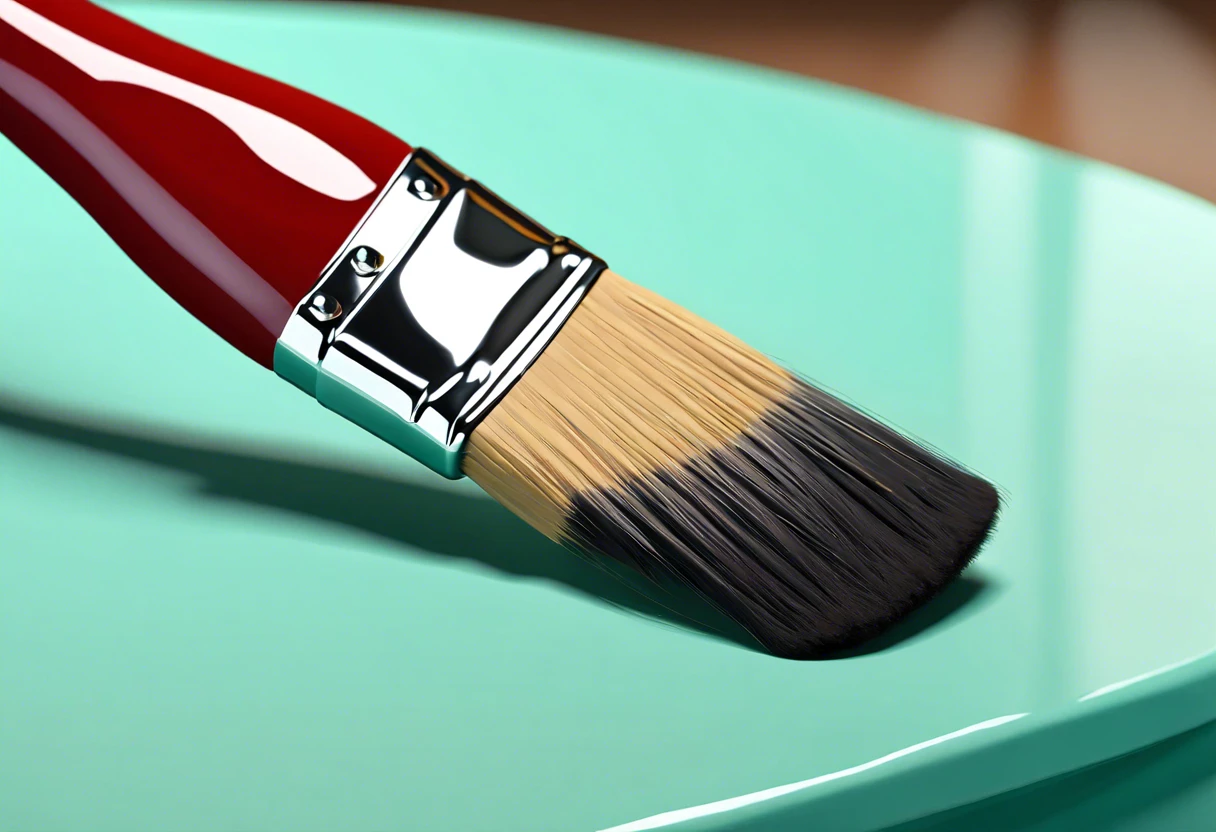
Common Issues Encountered When Painting Laminate
My friend tried painting their laminate dresser, but it peeled within weeks. What a frustration! They used regular paint, thinking it would adhere better.
To fix this, use a bonding primer, like Zinsser or BIN. Apply 1–2 coats before painting with latex or acrylic paint. This way, you’ll achieve a durable finish.
Finishing Touches to Enhance Your Painted Laminate
After you’ve painted, add a topcoat for durability. Use a polyurethane sealant, like Minwax Polycrylic, for a protective finish of 182 g/m² (6 Oz/ft²).
Inspect for scratches and avoid wet cloths. Check edges where the laminate meets substrates for cracks daily. A detailed visual assessment can catch issues before they worsen.
An insider tip: Use a foam roller for an even coat on laminate surfaces; it provides better thickness control around tricky areas like edges and curves.
Tips for Achieving a Smooth Finish on Painted Laminate
Want to make your painted laminate surfaces look flawless? Here’s how you can achieve that perfect, smooth finish.
The Finishing Touch
A freshly painted wall is a blank canvas. The best way to bring your room to life is with a single piece of statement art that ties everything together.
Browse Wall Art at Big Wall Decor-
Choose the Right Paint Finish
Opt for satin or semi-gloss finishes. They not only look good but also hide imperfections better than flat finishes.
-
Use Thin Coats
Always apply paint in thin coats. This helps prevent drips and unevenness. Remember, it’s better to do three thin layers than one thick one!
-
Sand Between Coats
Lightly sand the surface between each coat of paint with fine-grit sandpaper (220 grit). This smoothens out any bumps and ensures better adhesion.
-
Apply a Clear Topcoat
After painting, seal it with a clear topcoat. It adds durability and enhances the shine, making your project look professionally done!
Understanding the Different Finishes for Painted Laminate
Selecting the right finish can make or break your painted laminate project. Here’s a breakdown of various finish options and how they impact your surfaces.
| Finish Type | Description | Best Uses | Durability |
|---|---|---|---|
| Matte | No shine, provides a non-reflective surface. | Living rooms, bedrooms. | Less durable; prone to fingerprints and stains. |
| Satin | Soft sheen; balances matte and glossy. | Any room; good for high-traffic areas. | Moderately durable; wipes clean easily. |
| Semi-Gloss | Shiny finish; stands out with high reflectivity. | Kitchen cabinets, doors, and trims. | Highly durable; resistant to moisture and stains. |
| High-Gloss | Very shiny; reflects a lot of light. | Accent pieces, furniture. | Extremely durable; very easy to clean. |
Common Mistakes When Painting Laminate
Are you guilty of making these common blunders? Let’s avoid them together!
- Skipping the Primer: Always use primer specifically for laminate. Skipping this step is a recipe for peeling paint.
- Using the Wrong Paint: Ensure your paint is suitable for laminate surfaces. Many regular paints won’t stick.
- Not Allowing Enough Dry Time: Rushing through drying time can lead to a tacky finish. Patience pays off!
- Applying Thick Coats: Thin layers prevent drips. Remember, it’s better to do multiple light coats than one heavy one.
Alternative Methods for Transforming Laminate
If painting’s not your jam, here are some cool alternatives to revamp laminate surfaces.
| Method | Description | Pros | Cons |
|---|---|---|---|
| Adhesive Vinyl | Cover surfaces with decorative adhesive vinyl. Choose patterns or colors that match your style! | Easy to apply, removable, and no drying time. | Can peel in high-moisture areas. |
| Stenciling | Add designs or patterns on top of painted laminate using stencils and a contrasting color. | Customizable look and can enhance creativity. | Time-consuming and requires precision. |
| Decoupage | Glue decorative paper or fabric to laminate surfaces for a different aesthetic. | Adds texture and interest; great for upcycling. | Needs a protective coat and may not withstand heat or moisture well. |
Frequently Asked Questions About Painting Laminate
Can I Paint Over Laminate Without Sanding?
Yes, you can paint over laminate without sanding. Some paint products are specially designed to stick to laminate surfaces without the need for sanding, making the process easier and quicker for you.
What Type Of Paint Works Best for Laminate?
Acrylic latex paint works best for laminate. It provides good adhesion and durability, making your finished surface tough yet smooth. Look for paint specifically labeled for laminates to guarantee the best results. If you’re curious about expanding your painting techniques, you might want to explore creative digital painting methods.
How Long Does Paint Last on Laminate?
Typically, paint lasts about 5 to 10 years on laminate before it needs a refresh. This time span depends mainly on factors like wear and tear, proper priming, and environmental conditions.
Can I Use Chalk Paint on Laminate?
Yes, you can use chalk paint on laminate. It gives a matte finish, which many people love. Just apply a sealing topcoat to protect the finish from scratches and moisture.
Is It Better to Use Spray Paint or Brush for Laminate?
Using spray paint is often better for laminate. It lays down an even coat without brush strokes, which can make your project look more professional. However, for detailed areas, a brush might still be needed. If you’re curious about alternative painting techniques, you might want to explore exterior painting techniques.
How Do You Prepare Laminate for Painting?
Preparing laminate for painting is crucial. Clean the surface thoroughly, and if using paint that requires it, apply a primer formulated for laminate to ensure paint adhesion and longevity.
Can You Paint Over Laminate Flooring?
Yes, you can paint over laminate flooring. Simply use a paint designed for flooring, and make sure to apply a sealing coat to resist damage from foot traffic.
How Do You Paint Laminate Kitchen Cabinets?
To paint laminate kitchen cabinets, clean, prime, and then use a high-quality paint. This helps ensure that the finish can handle everyday use and maintains its appeal longer.
Conclusion
I hope this was worth your while. We covered what laminate is, considerations before painting, a step-by-step guide, color recommendations, types of laminate surfaces, factors influencing success, common issues, finishing touches, and DIY project ideas.
So, can laminate be painted? Yes, it can, but you’ll need the right prep and materials. Remember, you can paint laminate wood furniture, floors, or even kitchen cabinets, but make sure you choose the proper paint to ensure durability. Contact me if you’d like more guidance on your painting project.
For additional insights and resources, feel free to explore our homepage: Paint Answers.
Additional Resources
- Gurney, J. (2009). Color and Light: A Guide for the Realist Painter. Kansas City, MO: Andrews McMeel Publishing.
Experienced interior designer with 15+ years in transforming spaces, blending artistry with expertise in color and design. Rhode Island School of Design graduate, specializing in restorations and modern makeovers.
Exterior, Wall






